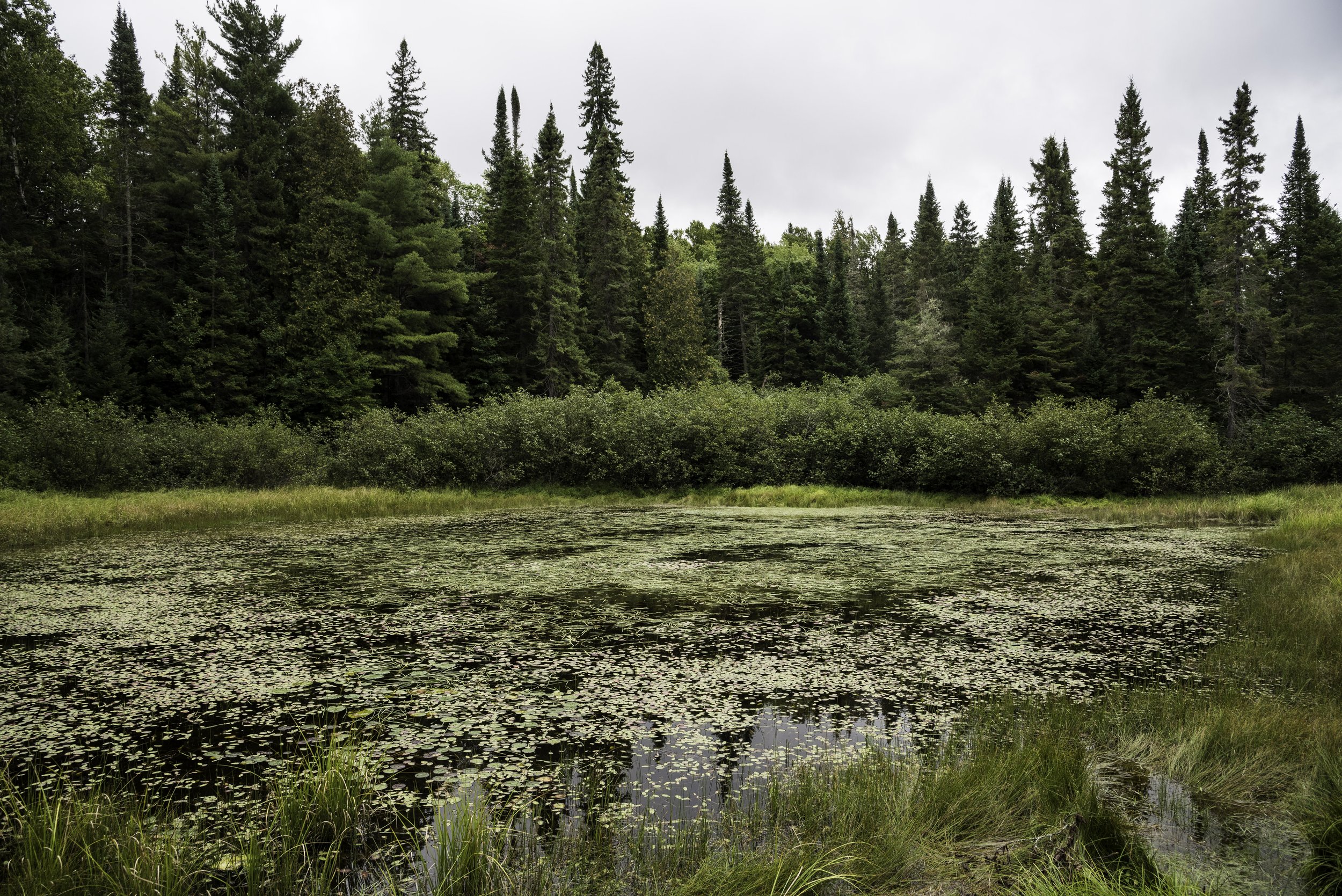The Spruce Bog at Algonquin Park. Image courtesy of Pina Travels.
Fog lingers in the cool dawn air. With each step I take, the boardwalk sinks and water rises through the slats. All around, there are plants – clumps of sedges, sphagnum moss, leatherleaf, and sweet gale shrubs. Spider webs that would normally be invisible in the branches shine with the dew they have collected overnight – tiny droplets like glass beads strung across complex architecture.
This is the Spruce Bog in Algonquin Park - a peat bog - one of the planet’s most efficient carbon sinks.
This bog began as a lake thousands of years ago when beavers flooded the valley. The lake was slowly settled by Woolly-fruit sedge, a grass-like plant whose roots can grow into open water. The sedge advanced from the edges toward the centre of the lake creating a web of roots that other plants could grow within. Through successive generations over thousands of years, the community of plants formed a dense mat across what was once a lake, transforming it into a bog.
In a bog that has been excavated, the layers of peat that were built up over thousands of years are visible. Image courtesy of University of Laval.
The water in peat bogs is acidic and lacks oxygen, making it hard for bacteria to survive there. When organic matter, like dead plants or fallen leaves, collects in the bog, it doesn’t decay very much, or at all, because the water lacks sufficient bacteria to break it down.
An artificial drainage ditch. The exposed peat changes from a carbon sink to a source of emissions. Image courtesy of Geological Survey of Sweden.
As generations of plants grow and die, layers of organic matter accumulate and are compressed into dense peat. The carbon that the plants have sequestered through photosynthesis remains stored for as long as the peat bog is left intact. However, when peat bogs are drained by humans, they begin to decay and release that stored-up carbon as greenhouse gases.
Around 15% of the world’s peatlands have been drained for agriculture, construction, roads, or to extract the peat itself. Since the 1950s, peat has been used as an ingredient in bagged garden soils, often labelled as sphagnum moss or peat moss.
Bogs take thousands of years to develop, so it is incredibly important to preserve the ones that remain. People are also working to restore damaged peat bogs through rewetting – a process that involves filling in artificial drainage ditches to restore the water table, then transplanting species from healthy bogs to bring back the biodiversity.
Peatlands cover only 3% of the planet’s land surface, yet they hold about 30% of all the carbon stored in soils. Beyond their ability to sequester carbon, peatlands are also sanctuaries for wildlife.
Canada contains 28% of the world’s peatlands, however only one eighth of them are protected. The Mushkegowuk First Nation in Northern Ontario play a leadership role in protecting peatlands in Canada. They are calling for formal protection and a moratorium on industrial activity.
There are many other types of wetlands. These include fens, swamps, salt and freshwater marshes, mangroves, and seagrass beds, to name a few. All wetlands sequester carbon from the atmosphere through photosynthesis and by collecting sediment from runoff. Collectively, wetlands provide habitat for 40% of the world’s species. They filter water, prevent erosion, and abate floods.
While often overlooked, wetlands are cornerstone ecosystems for the health of the planet and our water, and the protection of the climate.
A healthy bog at Algonquin Park. Image courtesy of GoodFreePhotos.





